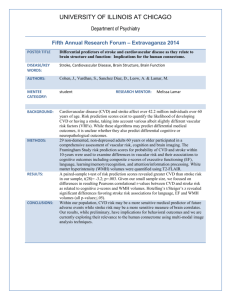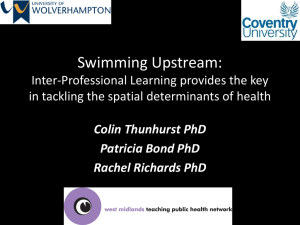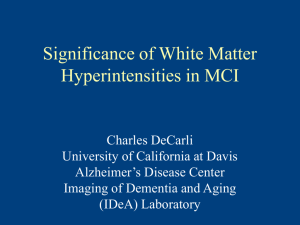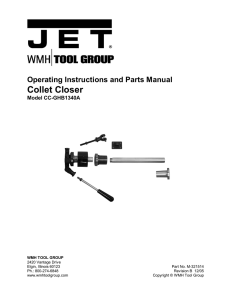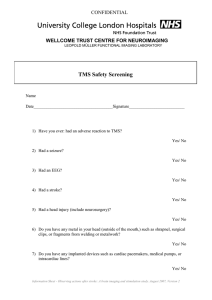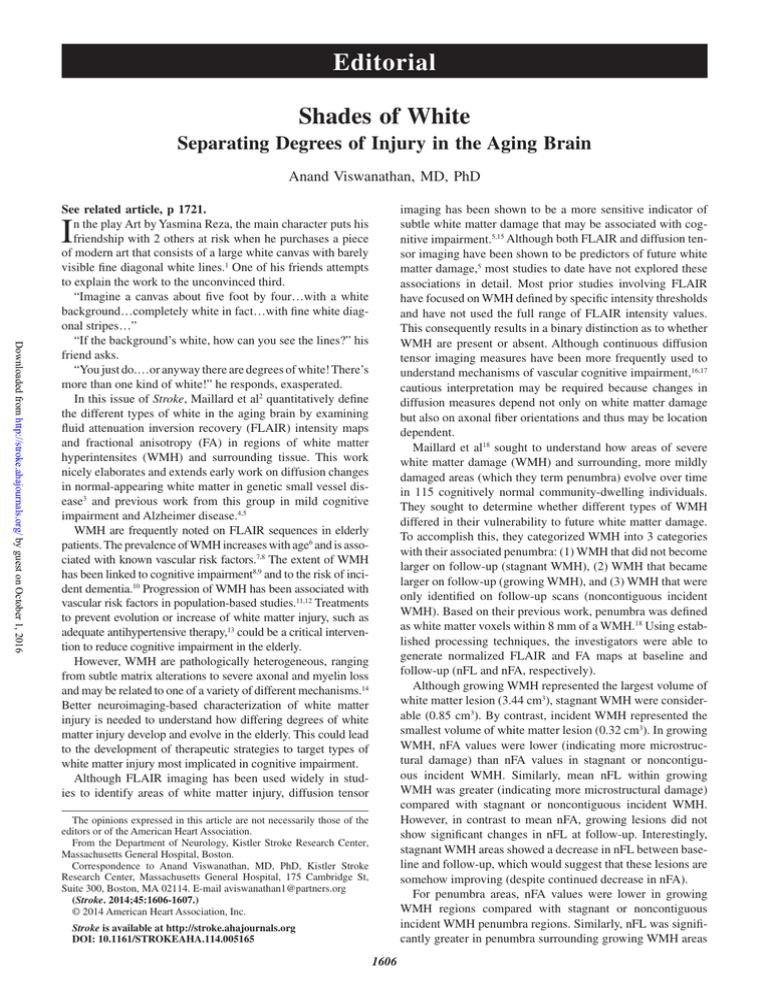
Editorial
Shades of White
Separating Degrees of Injury in the Aging Brain
Anand Viswanathan, MD, PhD
See related article, p 1721.
n the play Art by Yasmina Reza, the main character puts his
friendship with 2 others at risk when he purchases a piece
of modern art that consists of a large white canvas with barely
visible fine diagonal white lines.1 One of his friends attempts
to explain the work to the unconvinced third.
“Imagine a canvas about five foot by four…with a white
background…completely white in fact…with fine white diagonal stripes…”
“If the background’s white, how can you see the lines?” his
friend asks.
“You just do.…or anyway there are degrees of white! There’s
more than one kind of white!” he responds, exasperated.
In this issue of Stroke, Maillard et al2 quantitatively define
the different types of white in the aging brain by examining
fluid attenuation inversion recovery (FLAIR) intensity maps
and fractional anisotropy (FA) in regions of white matter
hyperintensites (WMH) and surrounding tissue. This work
nicely elaborates and extends early work on diffusion changes
in normal-appearing white matter in genetic small vessel disease3 and previous work from this group in mild cognitive
impairment and Alzheimer disease.4,5
WMH are frequently noted on FLAIR sequences in elderly
patients. The prevalence of WMH increases with age6 and is associated with known vascular risk factors.7,8 The extent of WMH
has been linked to cognitive impairment8,9 and to the risk of incident dementia.10 Progression of WMH has been associated with
vascular risk factors in population-based studies.11,12 Treatments
to prevent evolution or increase of white matter injury, such as
adequate antihypertensive therapy,13 could be a critical intervention to reduce cognitive impairment in the elderly.
However, WMH are pathologically heterogeneous, ranging
from subtle matrix alterations to severe axonal and myelin loss
and may be related to one of a variety of different mechanisms.14
Better neuroimaging-based characterization of white matter
injury is needed to understand how differing degrees of white
matter injury develop and evolve in the elderly. This could lead
to the development of therapeutic strategies to target types of
white matter injury most implicated in cognitive impairment.
Although FLAIR imaging has been used widely in studies to identify areas of white matter injury, diffusion tensor
imaging has been shown to be a more sensitive indicator of
subtle white matter damage that may be associated with cognitive impairment.5,15 Although both FLAIR and diffusion tensor imaging have been shown to be predictors of future white
matter damage,5 most studies to date have not explored these
associations in detail. Most prior studies involving FLAIR
have focused on WMH defined by specific intensity thresholds
and have not used the full range of FLAIR intensity values.
This consequently results in a binary distinction as to whether
WMH are present or absent. Although continuous diffusion
tensor imaging measures have been more frequently used to
understand mechanisms of vascular cognitive impairment,16,17
cautious interpretation may be required because changes in
diffusion measures depend not only on white matter damage
but also on axonal fiber orientations and thus may be location
dependent.
Maillard et al18 sought to understand how areas of severe
white matter damage (WMH) and surrounding, more mildly
damaged areas (which they term penumbra) evolve over time
in 115 cognitively normal community-dwelling individuals.
They sought to determine whether different types of WMH
differed in their vulnerability to future white matter damage.
To accomplish this, they categorized WMH into 3 categories
with their associated penumbra: (1) WMH that did not become
larger on follow-up (stagnant WMH), (2) WMH that became
larger on follow-up (growing WMH), and (3) WMH that were
only identified on follow-up scans (noncontiguous incident
WMH). Based on their previous work, penumbra was defined
as white matter voxels within 8 mm of a WMH.18 Using established processing techniques, the investigators were able to
generate normalized FLAIR and FA maps at baseline and
follow-up (nFL and nFA, respectively).
Although growing WMH represented the largest volume of
white matter lesion (3.44 cm3), stagnant WMH were considerable (0.85 cm3). By contrast, incident WMH represented the
smallest volume of white matter lesion (0.32 cm3). In growing
WMH, nFA values were lower (indicating more microstructural damage) than nFA values in stagnant or noncontiguous incident WMH. Similarly, mean nFL within growing
WMH was greater (indicating more microstructural damage)
compared with stagnant or noncontiguous incident WMH.
However, in contrast to mean nFA, growing lesions did not
show significant changes in nFL at follow-up. Interestingly,
stagnant WMH areas showed a decrease in nFL between baseline and follow-up, which would suggest that these lesions are
somehow improving (despite continued decrease in nFA).
For penumbra areas, nFA values were lower in growing
WMH regions compared with stagnant or noncontiguous
incident WMH penumbra regions. Similarly, nFL was significantly greater in penumbra surrounding growing WMH areas
I
Downloaded from http://stroke.ahajournals.org/ by guest on October 1, 2016
The opinions expressed in this article are not necessarily those of the
editors or of the American Heart Association.
From the Department of Neurology, Kistler Stroke Research Center,
Massachusetts General Hospital, Boston.
Correspondence to Anand Viswanathan, MD, PhD, Kistler Stroke
Research Center, Massachusetts General Hospital, 175 Cambridge St,
Suite 300, Boston, MA 02114. E-mail aviswanathan1@partners.org
(Stroke. 2014;45:1606-1607.)
© 2014 American Heart Association, Inc.
Stroke is available at http://stroke.ahajournals.org
DOI: 10.1161/STROKEAHA.114.005165
1606
Viswanathan Shades of White 1607
Downloaded from http://stroke.ahajournals.org/ by guest on October 1, 2016
compared with the other 2 categories. Penumbra of growing WMH and penumbra of noncontiguous incident WMH
showed increased nFL at follow-up. Finally, all WMH areas
and their associated penumbra showed increase in microstructural damage over time as measured by nFA.
These interesting results show that not all WMH reflect the
same degree of white matter damage and that there may be
considerable heterogeneity in pathology between different
WMH areas. The results further suggest that not all WMH
share the same fate. This builds on and extends previous work
in the literature.19,20 Furthermore, these results convincingly
demonstrate that although diffusion tensor imaging–based
measures could be used as a continuous measure of white
matter integrity, FLAIR signal changes may have more of a
plateau effect in more severely damaged white matter areas
and may represent a more dichotomous measure.
This innovative study generates new questions to be addressed
about WMH. As the authors were only able to examine 2 time
points in this study, future studies may wish to address whether
white matter integrity decrease (as measured by nFA) is truly
linear or if the decrease becomes more accelerated over time,
with increasing age, or with specific vascular risk factors.
Second, because previous studies have shown that blood pressure reduction is associated with decreased WMH growth in
­community-based populations,13 the effect of such treatments
on global and region-specific nFA values may warrant further
study. Third, it will be important to define the precise relationship of changes in these white matter integrity measures
to changes in cognition. Finally, as the authors point out, one
hypothesis to explain the improvement seen in the FLAIR signal of stagnant lesions could be related to resolving inflammation. To address this question, the authors’ methodologies could
potentially be used to study a cohort of patients with inflammation associated WMH, such as patients with multiple sclerosis
or with cerebral amyloid angiopathy–related inflammation.21
Although the character in Art fails to sway his friend that
all that is white is not the same, the investigators in this study
convincingly demonstrate that there is considerable nuance in
things that appear white and that these nuances may be critical in the design of future intervention strategies to prevent
cerebral white matter damage and cognitive impairment in the
elderly.
Sources of Funding
Dr Viswanathan is supported by National Institutes of Health
­K23-AG028726-04 and P50-AG00513430 (sub no. 8382).
Disclosures
None.
References
1. Reza Y. Art. New York, NY: Faber & Faber; 1997:5.
2. Maillard P, Fletcher E, Lockhart SN, Roach A, Reed B, Mungas D, et al.
White matter hyperintensities and their penumbra lie along a continuum
of injury in the aging brain. Stroke. 2014;45:1721–1726.
3. Chabriat H, Pappata S, Poupon C, Clark CA, Vahedi K, Poupon F,
et al. Clinical severity in CADASIL related to ultrastructural damage in white matter: in vivo study with diffusion tensor MRI. Stroke.
1999;30:2637–2643.
4. Lee DY, Fletcher E, Martinez O, Ortega M, Zozulya N, Kim J, et al.
Regional pattern of white matter microstructural changes in normal
aging, MCI, and AD. Neurology. 2009;73:1722–1728.
5. Maillard P, Carmichael O, Harvey D, Fletcher E, Reed B, Mungas D,
et al. FLAIR and diffusion MRI signals are independent predictors of
white matter hyperintensities. AJNR Am J Neuroradiol. 2013;34:54–61.
6. de Leeuw FE, de Groot JC, Achten E, Oudkerk M, Ramos LM, Heijboer
R, et al. Prevalence of cerebral white matter lesions in elderly people:
a population based magnetic resonance imaging study. The Rotterdam
Scan Study. J Neurol Neurosurg Psychiatry. 2001;70:9–14.
7. Liao D, Cooper L, Cai J, Toole J, Bryan N, Burke G, et al. The prevalence
and severity of white matter lesions, their relationship with age, ethnicity, gender, and cardiovascular disease risk factors: the ARIC Study.
Neuroepidemiology. 1997;16:149–162.
8. Longstreth WT Jr, Manolio TA, Arnold A, Burke GL, Bryan N, Jungreis
CA, et al. Clinical correlates of white matter findings on cranial magnetic
resonance imaging of 3301 elderly people. The Cardiovascular Health
Study. Stroke. 1996;27:1274–1282.
9. Au R, Massaro JM, Wolf PA, Young ME, Beiser A, Seshadri S, et al.
Association of white matter hyperintensity volume with decreased
cognitive functioning: the Framingham Heart Study. Arch Neurol.
2006;63:246–250.
10. Debette S, Markus HS. The clinical importance of white matter hyperintensities on brain magnetic resonance imaging: systematic review and
meta-analysis. BMJ. 2010;341:c3666.
11. Debette S, Seshadri S, Beiser A, Au R, Himali JJ, Palumbo C, et al.
Midlife vascular risk factor exposure accelerates structural brain aging
and cognitive decline. Neurology. 2011;77:461–468.
12. de Leeuw FE, de Groot JC, Oudkerk M, Witteman JC, Hofman A, van
Gijn J, et al. A follow-up study of blood pressure and cerebral white matter lesions. Ann Neurol. 1999;46:827–833.
13. Godin O, Tzourio C, Maillard P, Mazoyer B, Dufouil C. Antihypertensive
treatment and change in blood pressure are associated with the progression of white matter lesion volumes: the Three-City (3C)-Dijon Magnetic
Resonance Imaging Study. Circulation. 2011;123:266–273.
14. Gouw AA, Seewann A, van der Flier WM, Barkhof F, Rozemuller AM,
Scheltens P, et al. Heterogeneity of small vessel disease: a systematic
review of MRI and histopathology correlations. J Neurol Neurosurg
Psychiatry. 2011;82:126–135.
15.Charlton RA, Schiavone F, Barrick TR, Morris RG, Markus HS.
Diffusion tensor imaging detects age related white matter change over
a 2 year follow-up which is associated with working memory decline.
J Neurol Neurosurg Psychiatry. 2010;81:13–19.
16.Viswanathan A, Godin O, Jouvent E, O’Sullivan M, Gschwendtner
A, Peters N, et al. Impact of MRI markers in subcortical vascular
dementia: a multi-modal analysis in CADASIL. Neurobiol Aging.
2010;31:1629–1636.
17. Lee DY, Fletcher E, Martinez O, Zozulya N, Kim J, Tran J, et al. Vascular
and degenerative processes differentially affect regional interhemispheric connections in normal aging, mild cognitive impairment, and
Alzheimer disease. Stroke. 2010;41:1791–1797.
18. Maillard P, Fletcher E, Harvey D, Carmichael O, Reed B, Mungas D, et al.
White matter hyperintensity penumbra. Stroke. 2011;42:1917–1922.
19. Fazekas F, Kleinert R, Offenbacher H, Schmidt R, Kleinert G, Payer F,
et al. Pathologic correlates of incidental MRI white matter signal hyperintensities. Neurology. 1993;43:1683–1689.
20. Spilt A, Goekoop R, Westendorp RG, Blauw GJ, de Craen AJ, van
Buchem MA. Not all age-related white matter hyperintensities are the
same: a magnetization transfer imaging study. AJNR Am J Neuroradiol.
2006;27:1964–1968.
21. Kinnecom C, Lev MH, Wendell L, Smith EE, Rosand J, Frosch MP, et al.
Course of cerebral amyloid angiopathy-related inflammation. Neurology.
2007;68:1411–1416.
Key Words: aging ◼ cognition ◼ leukoencephalopathies
Shades of White: Separating Degrees of Injury in the Aging Brain
Anand Viswanathan
Downloaded from http://stroke.ahajournals.org/ by guest on October 1, 2016
Stroke. 2014;45:1606-1607; originally published online April 29, 2014;
doi: 10.1161/STROKEAHA.114.005165
Stroke is published by the American Heart Association, 7272 Greenville Avenue, Dallas, TX 75231
Copyright © 2014 American Heart Association, Inc. All rights reserved.
Print ISSN: 0039-2499. Online ISSN: 1524-4628
The online version of this article, along with updated information and services, is located on the
World Wide Web at:
http://stroke.ahajournals.org/content/45/6/1606
Permissions: Requests for permissions to reproduce figures, tables, or portions of articles originally published
in Stroke can be obtained via RightsLink, a service of the Copyright Clearance Center, not the Editorial Office.
Once the online version of the published article for which permission is being requested is located, click
Request Permissions in the middle column of the Web page under Services. Further information about this
process is available in the Permissions and Rights Question and Answer document.
Reprints: Information about reprints can be found online at:
http://www.lww.com/reprints
Subscriptions: Information about subscribing to Stroke is online at:
http://stroke.ahajournals.org//subscriptions/


